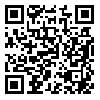Volume 8, Issue 3 (2017)
LRR 2017, 8(3): 135-158 |
Back to browse issues page
Download citation:
BibTeX | RIS | EndNote | Medlars | ProCite | Reference Manager | RefWorks
Send citation to:



BibTeX | RIS | EndNote | Medlars | ProCite | Reference Manager | RefWorks
Send citation to:
veisi hesar R. Aspect in Kurdish: From Ontology to Grammar. LRR 2017; 8 (3) :135-158
URL: http://lrr.modares.ac.ir/article-14-11278-en.html
URL: http://lrr.modares.ac.ir/article-14-11278-en.html
Assistant professor of linguistics at the University of Kurdistan
Abstract: (7921 Views)
The present paper aims at investigating the aspectual system in; Mukriyani Kurdish language. The theoretical framework of this paper is based on the two-component theory of aspectuality (Smith (1997) and the Discourse Representation Theory (Kamp and Reyle 1993). These theories are employed to explain and categorize the relevant data in order to determine the possible aspectual categories. In this regard, a corpus including simple and complex verbs is analyzed from a semantic perspective to illustrate the possible lexical aspects (situation types) in Kurdish language. The verb phrase (VP) is regarded as the level of analysis in this research; accordingly, the verb along with its arguments and adjuncts are considered as a semantic complex conveying an aspectual meaning. The present research seeks to answer these questions: what are the main aspectual categories in Kurdish language? How can they be described at the level of verb phrase? What are those linguistic instruments which can trigger aspect shifting in the sentence? The results show that five kinds of situation-type aspects (activity, accomplishment, achievement, semelfactive, and state) exist in Kurdish language. Also, it indicates that some elements in the sentence trigger coercion (type shifting) which is responsible for derived aspectual categories. For example, durative adverbs transform the accomplishment verbs into activity verbs. In addition, the unspecified internal argument is incompatible with the accomplishments, because it turns the accomplishment verbs into activity ones. However, the accomplishments are compatible with specified internal arguments and also with completive adverbs. Concerning activity events, they are compatible with un-bounded and durative adverbs, and also with the unspecified internal argument. Nevertheless, the bounded spatial adverbs transform the aspectual category of activity into accomplishment. As far as semelfactive is concerned, it is turned into a repetitive activity when it is combined with the durative adverbs or with imperfective aspect; but it is compatible with punctual temporal adverbs. The verbs characterized by the stative aspect are turned into dynamic when they are combined with the progressive auxiliaries. However, most of the verbs with stative aspect may not be combined with the imperfective aspect. In the same vein, the achievement verbs undergo semantic change in the presence of durative adverbs or the imperfective aspect. In fact, the grammatical aspect of imperfectivitytriggers aspectual shifting when it is combined with some of the lexical aspects (such as semelfactive, achievement and state). The results show that the five kinds of lexical aspects in Kurdish language are highly influenced by grammatical computation. The argument structure and the different adverbial phrases have a great impact on determining the final aspect of the verb in the sentence. In other words, the aspect of a verb may not be regarded as a category representing an event in the real world; on the contrary, it should be considered as a grammatical entity made by different linguistic elements in the verbal constellation. In other words, the final aspectual category of a verb is determined by a syntactic relationship among verb, its argument structure, and also the adjuncts. Finally, the paper tries to present the formal representation of the different situation aspects in Kurdish language.
Keywords: Situation Aspect, Grammatical aspect, Verbal constellation, Type Shifting, Mukriyani Dialect
| Rights and permissions | |
 |
This work is licensed under a Creative Commons Attribution-NonCommercial 4.0 International License. |







